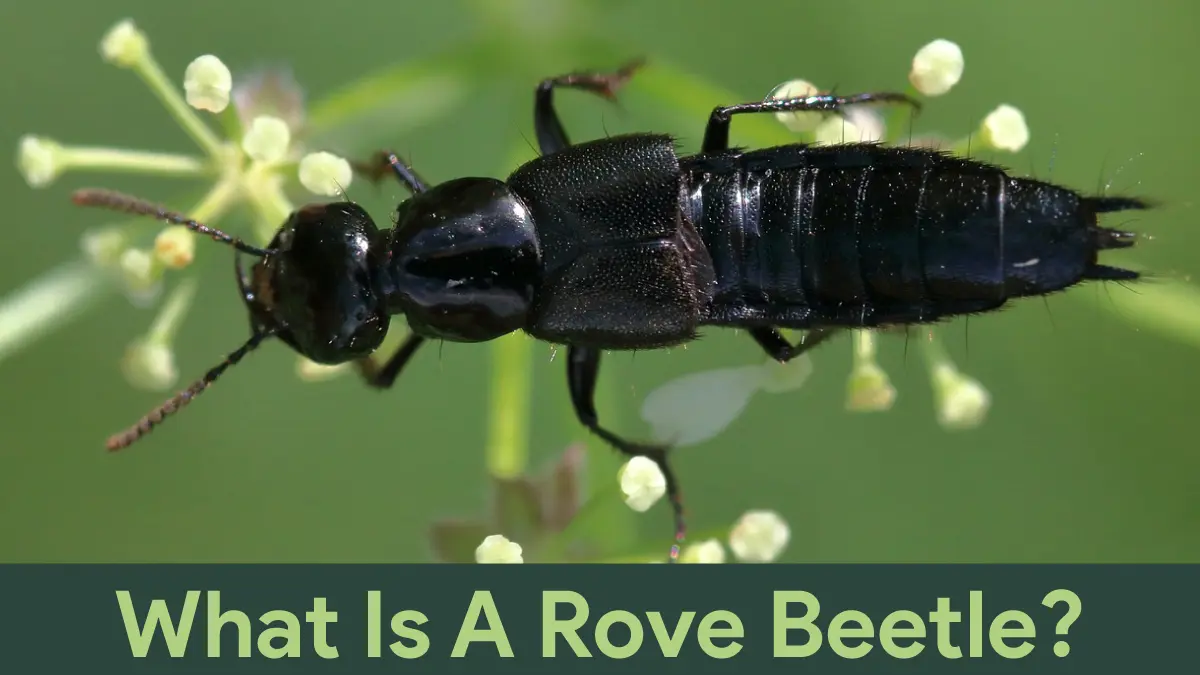There are over 63,000 described species of rove beetles, making them one of the largest groups of beetles in the world. Despite their abundance and diversity, we know very little about the biology and behaviour of many species of rove beetles.
We will discuss what is a rove beetle? Its types, characteristics and habitat.
Table of Contents
What is a rove beetle?
We know rove beetles for their long, slender bodies and short elytra (wing covers) that expose their membranous hind wings.
Their habit of “roving” or running rapidly instead of crawling or flying also characterized them.
Some species of rove beetles are predaceous and feed on other insects. In contrast, others feed on plant material or are decomposers.
Types of Rove Beetles?
There are many rove beetles, as they belong to a large and diverse family of insects. Here are a few examples:
- Aleochara species: are predatory rove beetles known for their flattened bodies and short elytra. We commonly find them eating organic matter and feeding on other insects.
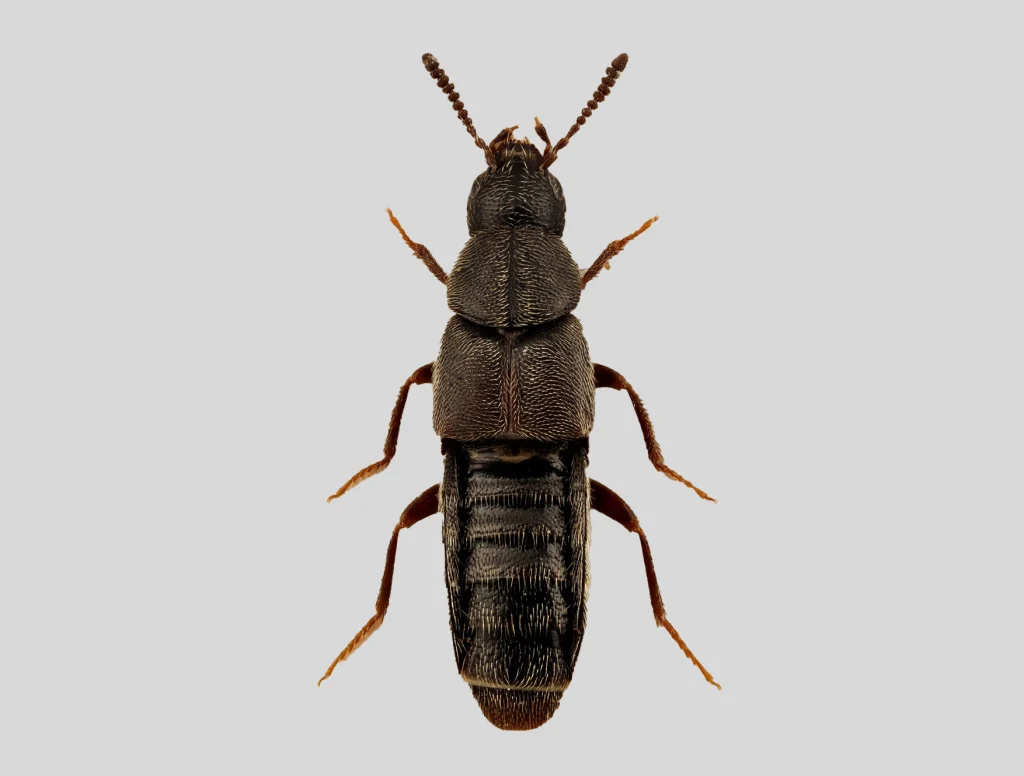
- Staphylinus species: This group of rove beetles is known for their long, slender bodies and ability to sprint. Some species are predaceous and feed on other insects, while others feed on plant material or are decomposers.
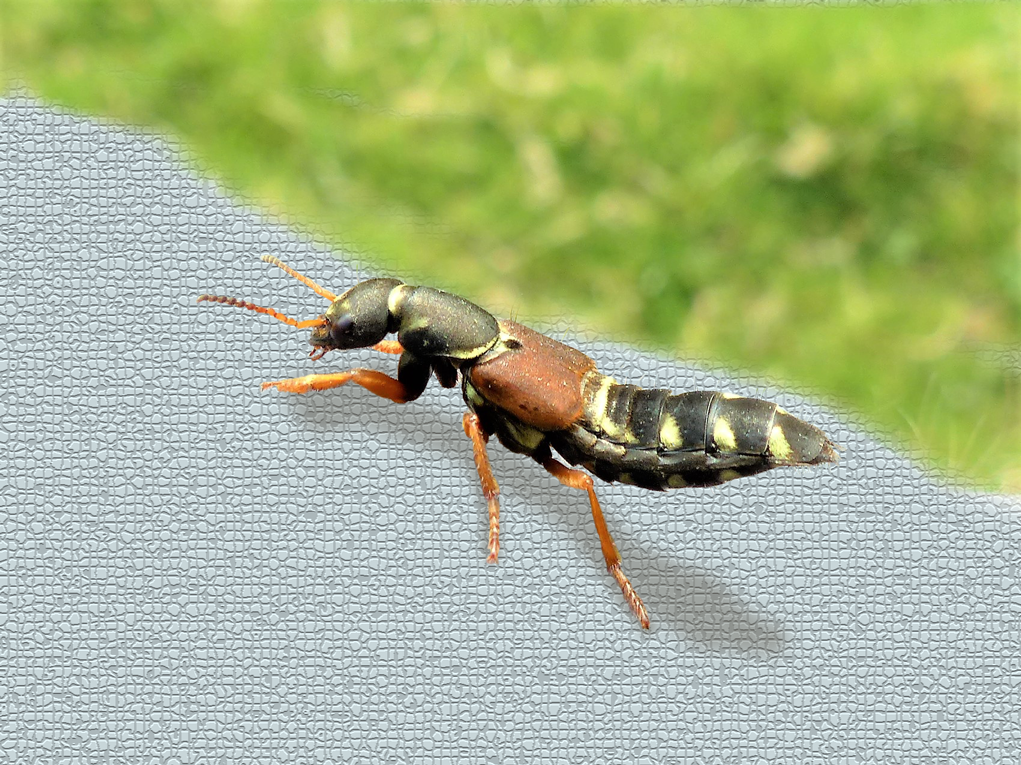
- Lathrobium beetles: They’re around fields and forests and have long legs and broad bodies. They feed on plant material and are important decomposers.
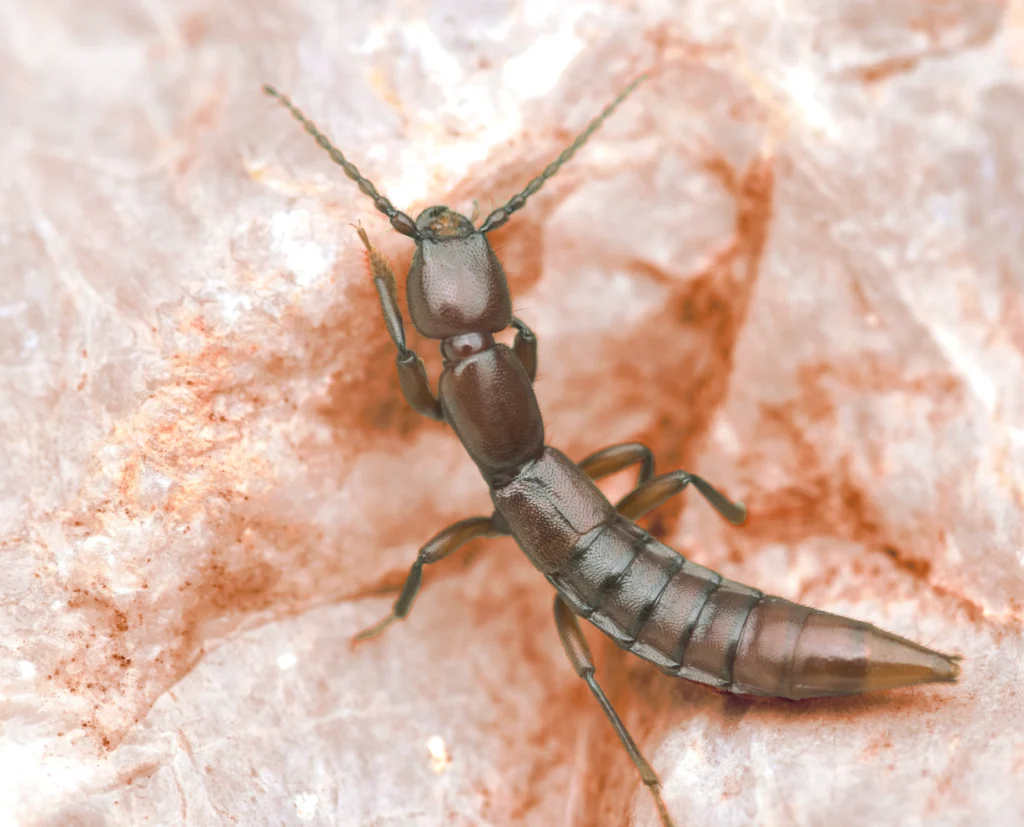
- Oxytelus species: large, flightless rove beetles commonly found in forests and other wooded areas. They feed on other insects and play an essential role in controlling pests.
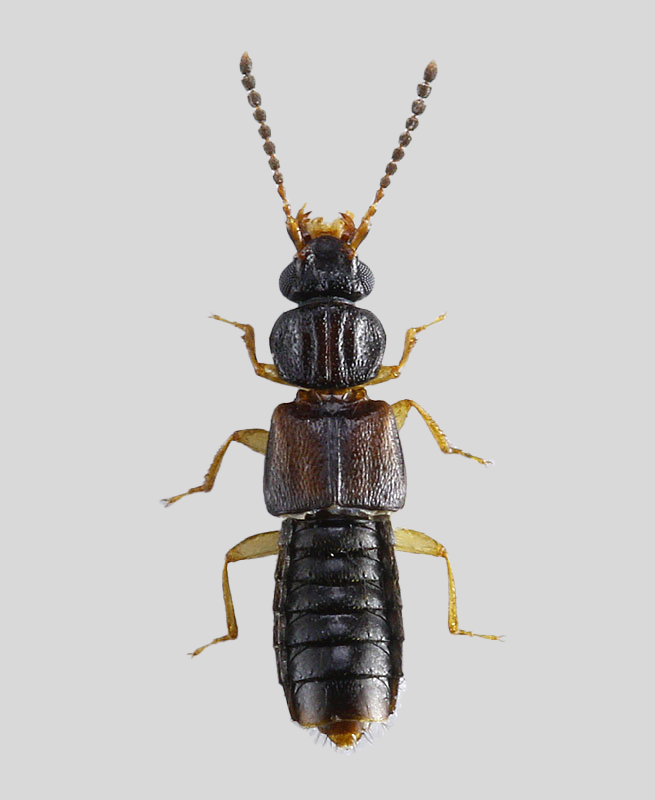
- Xantholinus species: we know Beetles as Xantholinus because of their orange or yellow bodies, and they roll up into a tight ball when threatened. We find them in a variety of habitats and feed on plant material.
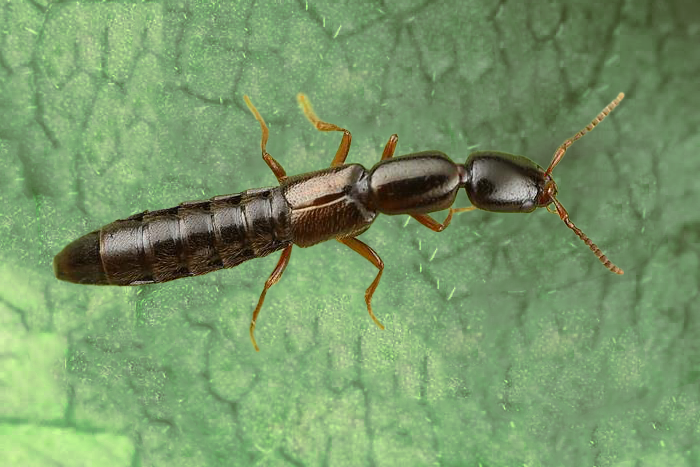
These are some examples of the many rove beetles. With over 63,000 described species, the rove beetles are a very diverse group of insects.
rove beetle size
Rove beetles vary in size depending on the species, but most are tiny insects ranging from 1 to 30 mm. Some smaller and larger beetles can grow to 30 mm.
Depending on the beetle’s age, its size also varies, with young bees becoming more significant adults as they mature.
Characteristics of rove beetles
Rove beetles are a diverse group of insects that belong to the Staphylinidae family, and several vital features characterize them:
- Body Shape: Most rove beetles have a long, slender body shape, with a narrow waist and an elongated thorax.
- Elytra: We know rove beetles for their short elytra (wing covers) that do not fully cover their membranous hind wings. This allows them to run rapidly rather than fly.
- Antenna: Rove beetles have long, slender antennae that are as long as their bodies.
- Legs: Rove beetles have long, slender legs adapted for running and crawling.
- Colour: The colour of rove beetles can differ, depending on the species. Some species have bright colours, while others are plain and fit in with the scenery.
- Diet: The diet of rove beetles can differ depending on the species. Some species are predatory and feed on other insects, while others feed on plant material or are decomposers.
Overall, the rove beetles are a diverse group of insects known for their long, slender bodies, short elytra, and rapid movement.
Where does the rove beetle live?
Rove beetles in various habitats, including forests, fields, gardens, decaying organic matter, and aquatic habitats like streams and ponds.
They are a highly adaptable and diverse group of insects that play essential roles in many ecosystems.
The behaviour of rove beetle?
The behaviour of rove beetles can differ depending on the species and their environment. Some general behaviours that are common among many species of rove beetles include:
- Rapid movement: we know many species of rove beetles for their fast action, as they can dash to escape predators or find food.
- Camouflage: Some rove beetles have colouration and patterns that help them interact with their surroundings, making avoiding predators easier.
- Some rove beetles will fight back if they’re threatened. This can include biting, secreting foul-smelling chemicals, or playing dead.
- The rove beetle’s a significant part of the ecosystem, pollinating and helping it grow by eating nectar.
- Predation: Some rove beetles are predators, feeding on other insects and helping to control pests.
- Decomposition: Some species of rove beetles are decomposers, feeding on decaying plant and animal material and helping to break down dead organic matter.
The life cycle of rove beetle?
The life cycle of rove beetles typically involves four stages: egg, larva, pupa, and adult.
- Egg: The female rove beetle lays eggs in various places, depending on the species. Some species lay their eggs in soil or leaf litter, while others lay their eggs in or on other insects or plants.
- Larva: After hatching from the egg, the rove beetle larva begins to feed. The larva of many species is predatory, feeding on other insects or decaying organic matter.
- Pupa: After feeding and growing, the larva pupates, forming a protective cocoon around itself.
- Adult: After emerging from the pupa, the adult rove beetle begins to mate and lay eggs, starting the cycle anew.
Overall, the life cycle of rove beetles is typical of many insects, with eggs hatching into larvae, which then pupate and emerge as adults.
What attracts rove beetles?
Rove beetles are attracted to food, light, pheromones, shelter, and moisture. The specific attractants can vary depending on the species and the situation.
Are rove beetles dangerous?
Rove beetles are not considered dangerous to humans. The bites and stings of some rode beetles are not harmful and usually cause minor irritation.
However, some species of rove beetles can be pests in agricultural settings, feeding on crops and reducing yields. In these cases, rove beetles can hurt food production and cause farmers economic losses.
Can rove beetles bite?
Yes, some species of rove beetles can bite. However, bites from rove beetles are not harmful to humans and cause only minor irritation.
They did not adapt well to the mouthparts of rove beetles for biting, and we often describe their bites as weak.
The likelihood of being bitten by a rove beetle depends on the species and the situation.
Some wild beetles are less likely to bite since they aren’t aggressive, while others may bite more when they feel threatened.
Are rove beetles beneficial?
Yes, rove beetles can be beneficial in many benefits, including:
- Pest control: Beetles are predators of other insects and are essential in controlling insect pests in agriculture and natural ecosystems.
- Decomposition: Some species of rove beetles are decomposers, breaking down plant and animal material and returning nutrients to the soil.
- Pollination: Certain species of rove beetles help transfer pollen between flowers, enabling plants to reproduce.
- Biological control: With some wild beetle varieties, we helped control pest populations without using chemical pesticides.
Final Words
Overall, rove beetles are a diverse and influential group of insects that play many beneficial roles in many unique ecosystems.
Despite their pest-causing properties in agriculture, wide other varieties are beneficial insects that help control pests, decompose, and promote plant pollination.
If you spot rove beetles, do not panic. Try to avoid it physically because now you know what is a rove beetle and how to handle them.
Related Articles
What are Dermestid Beetles, is it a cleanup crew for nature?
What Are Weevil Beetles? A Beginner’s Guide
